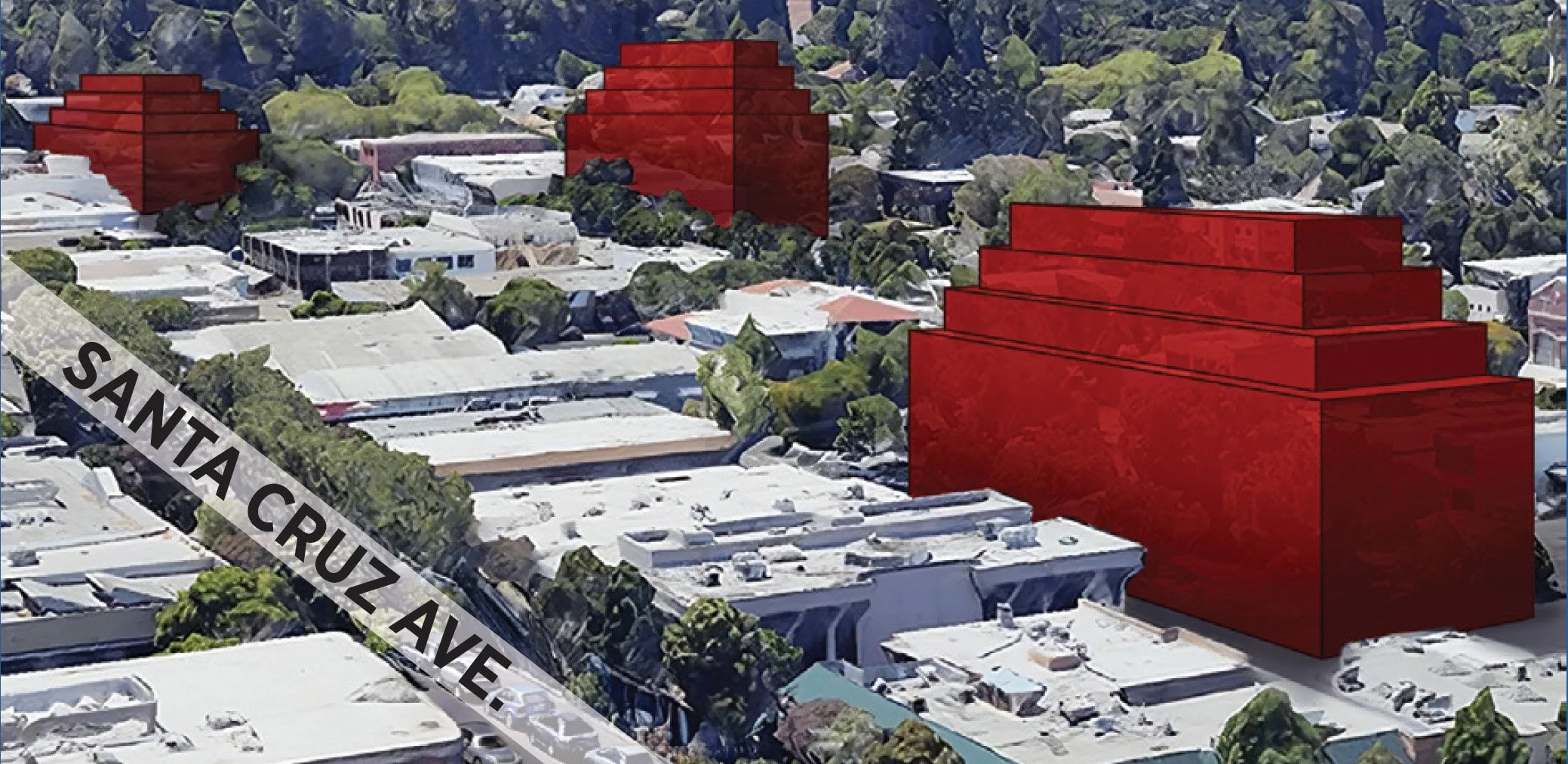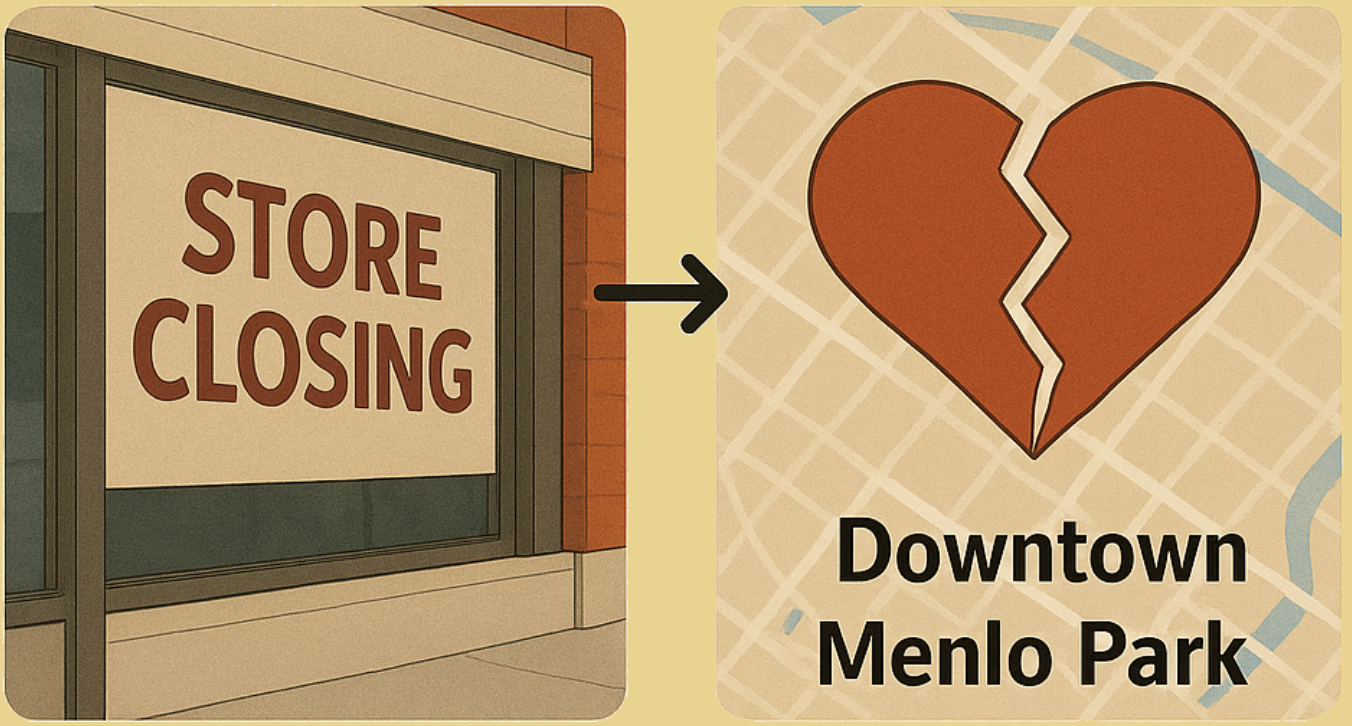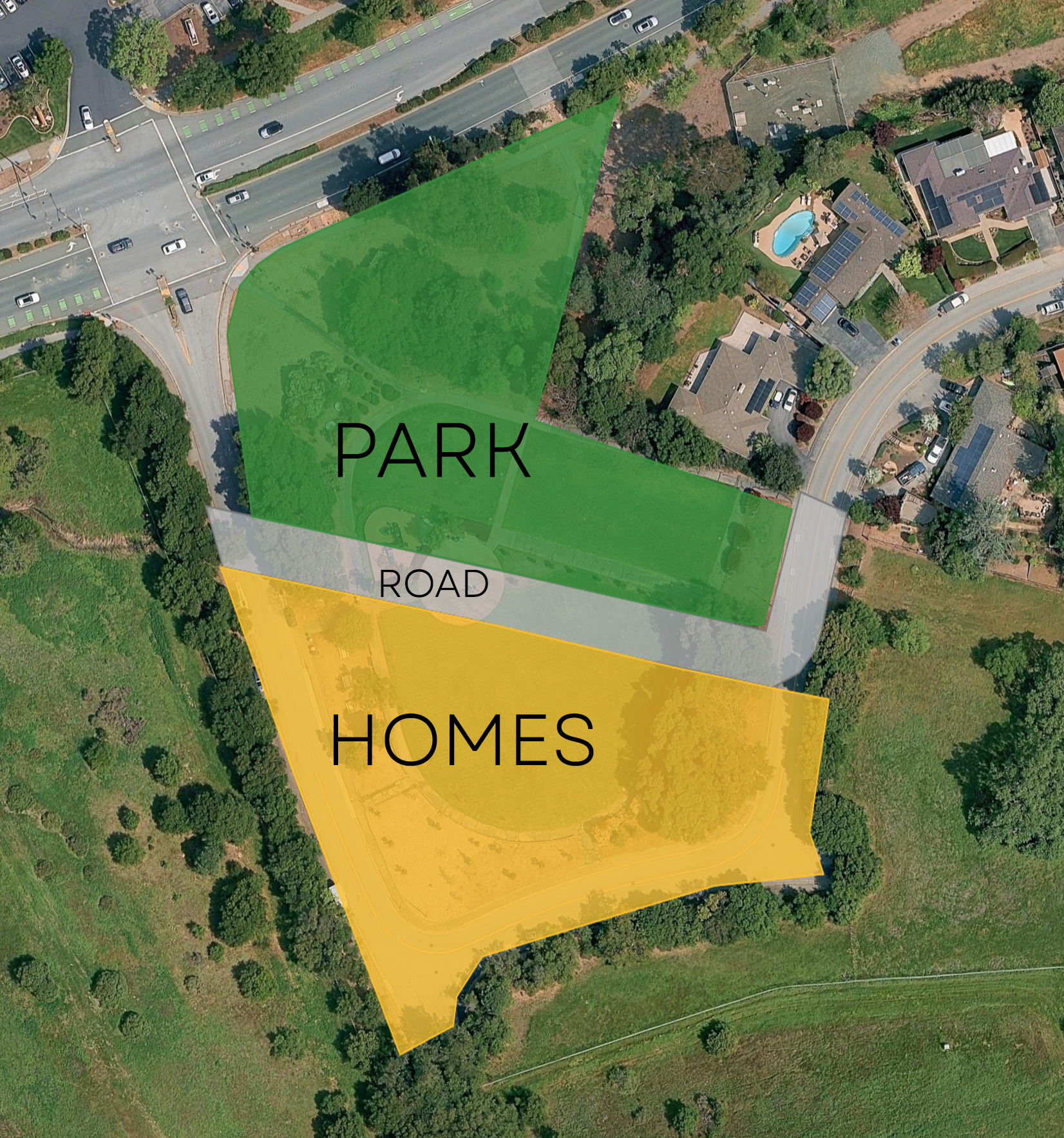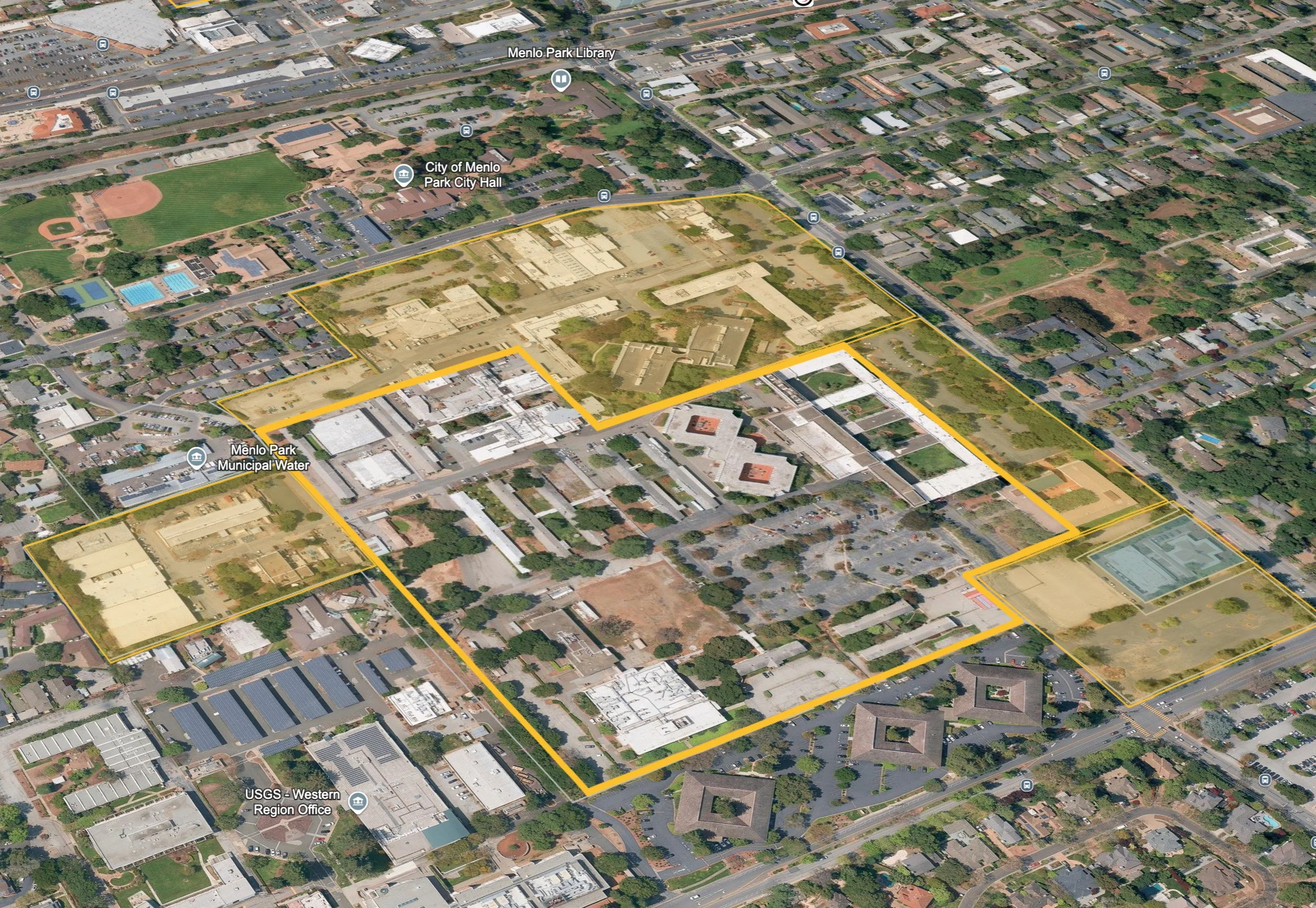Menlo Park Can Do Better.
The Latest
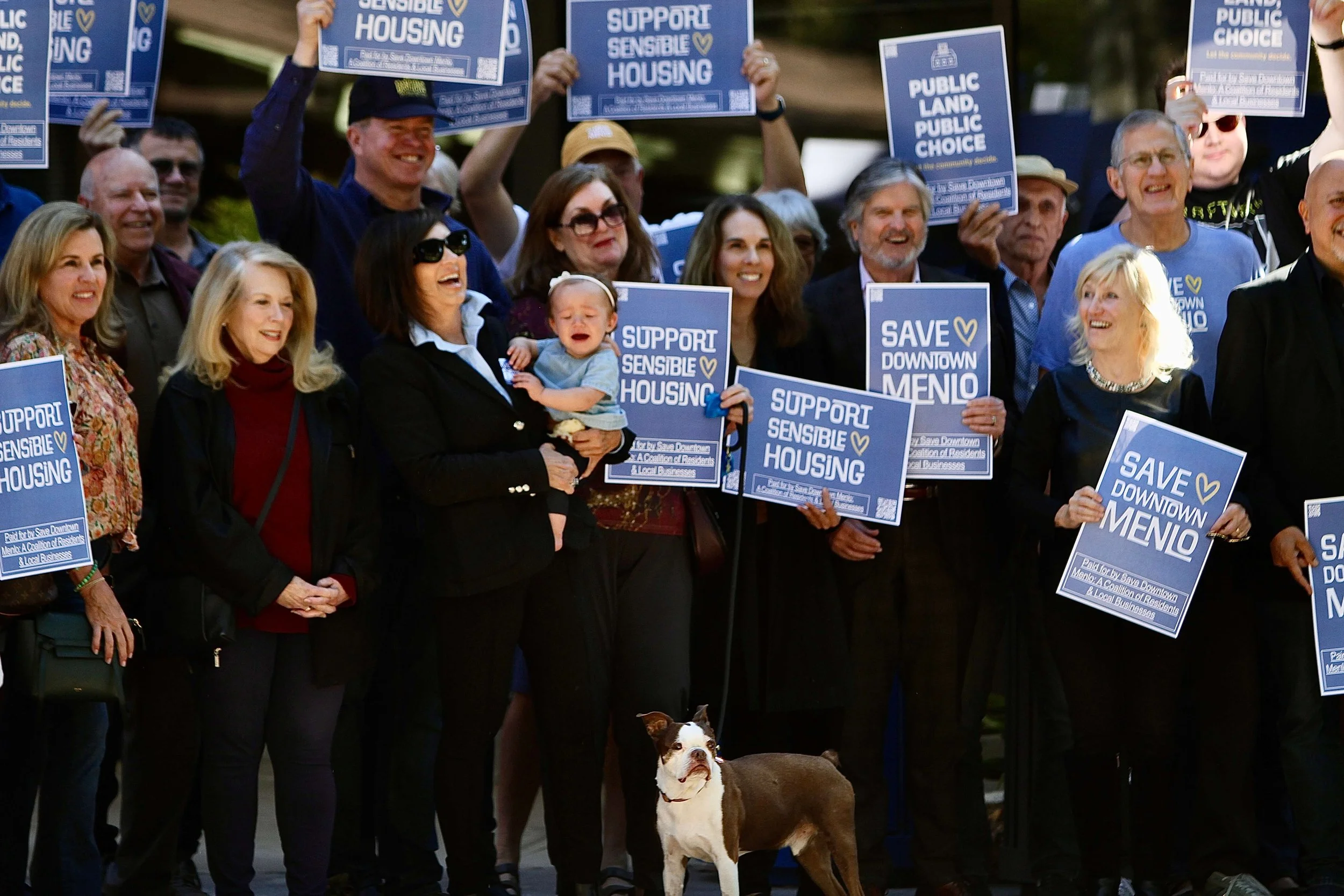

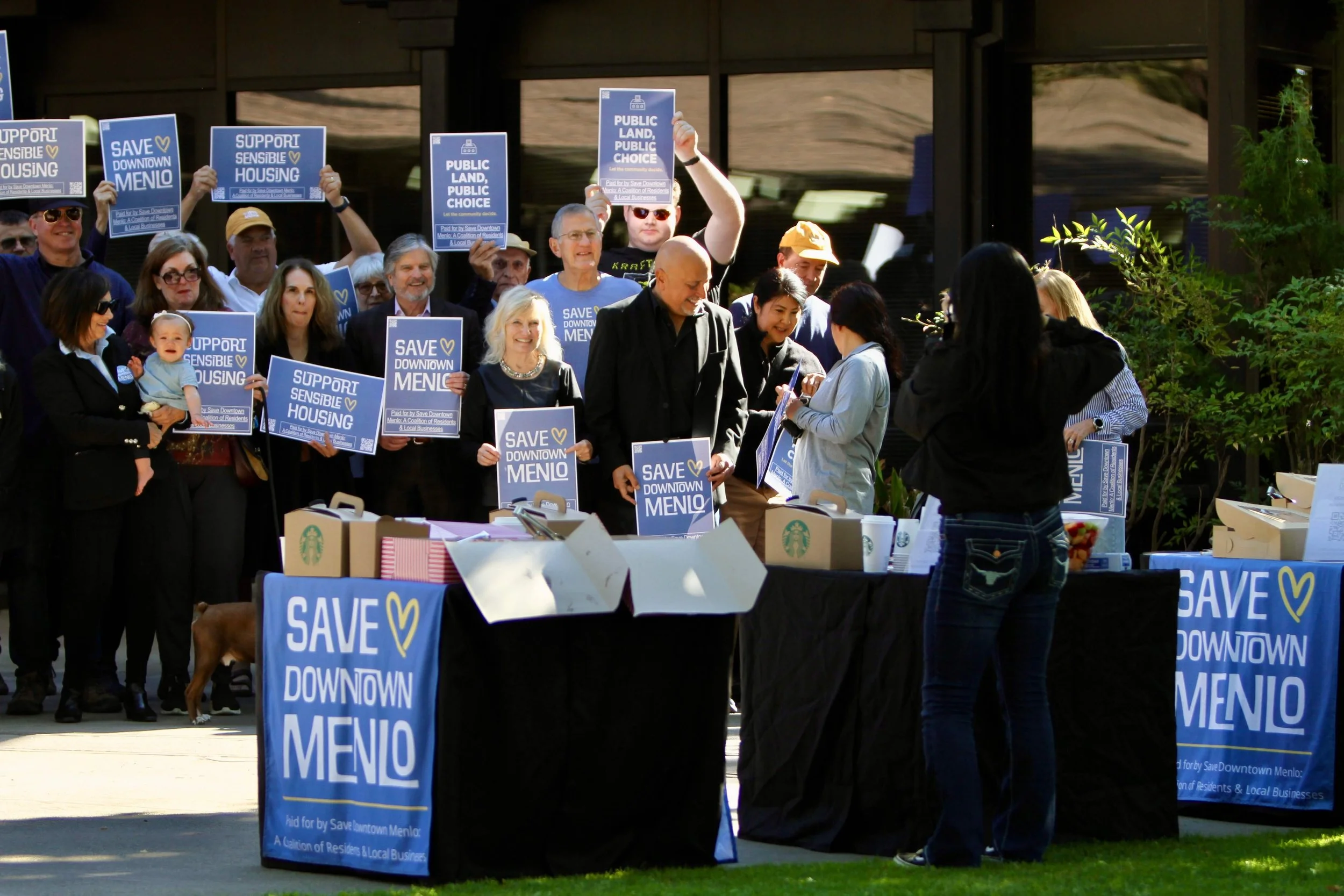
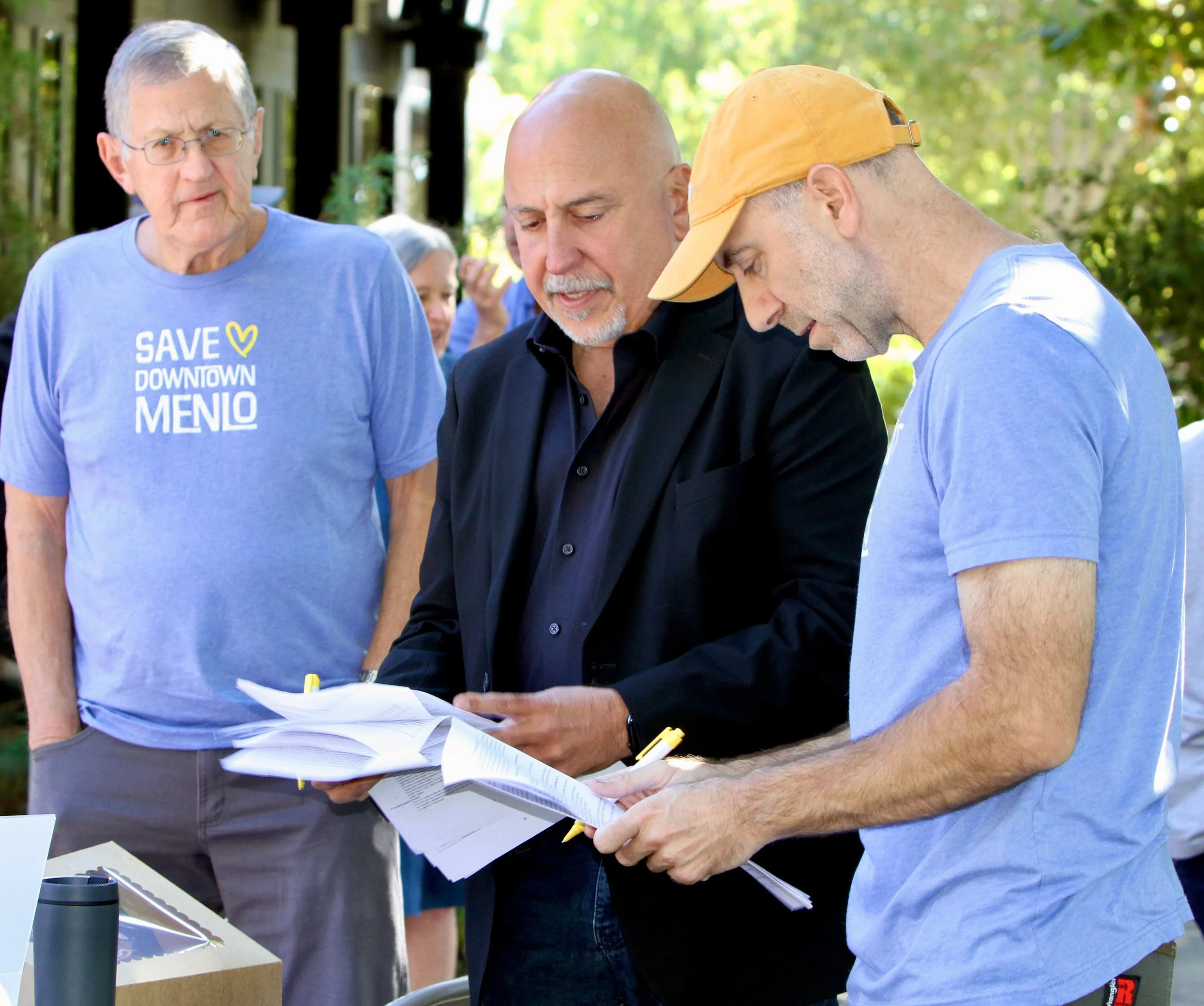
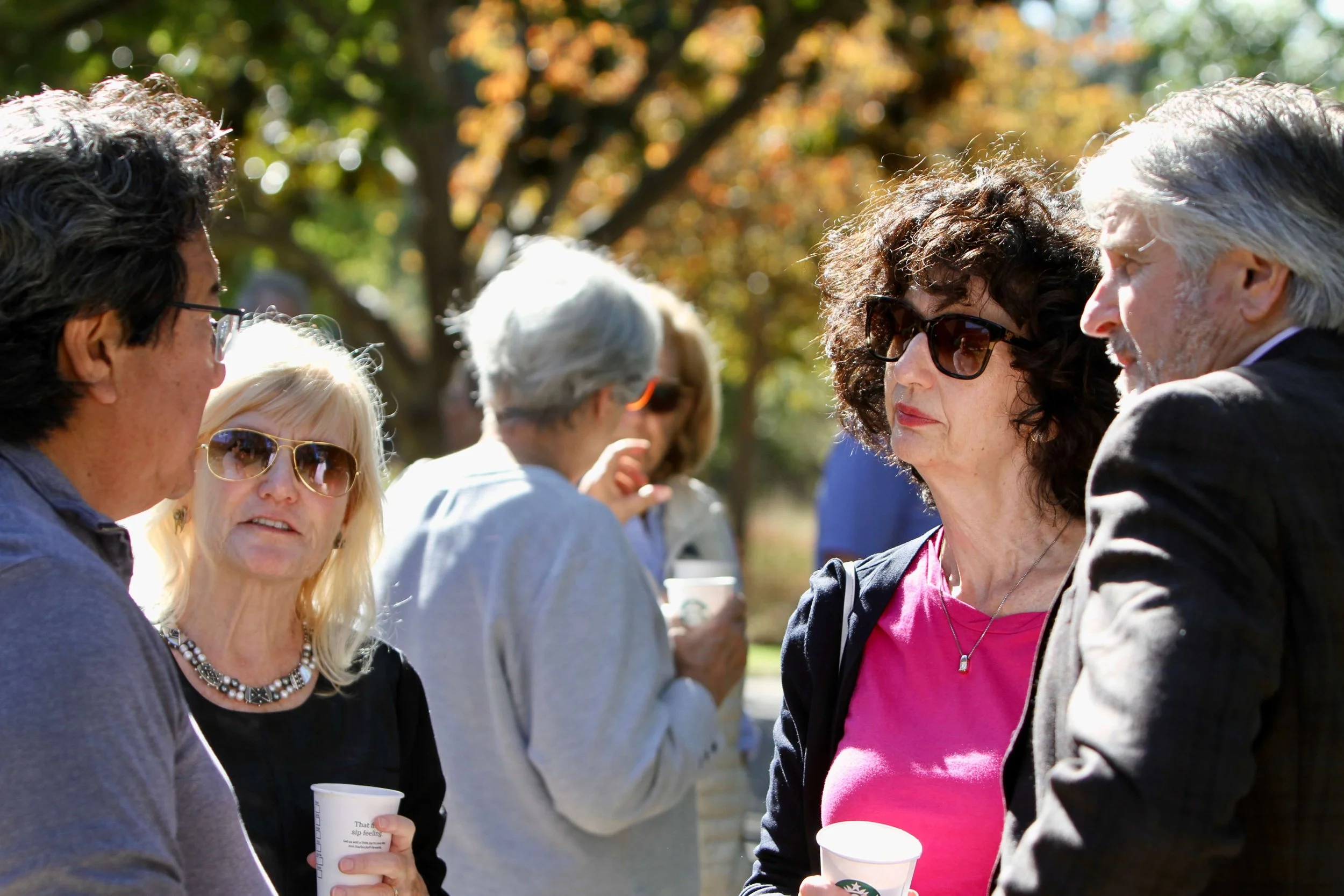
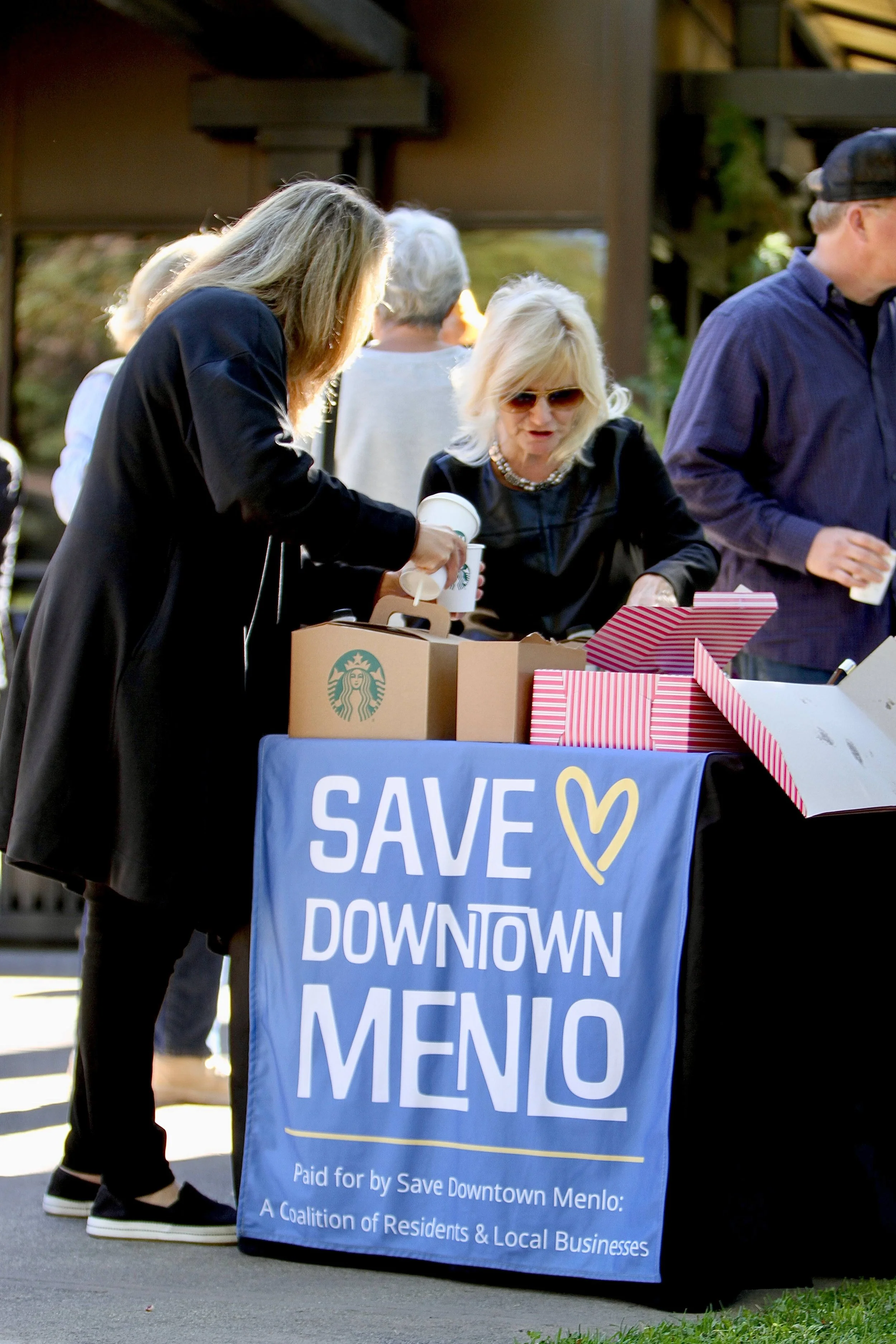
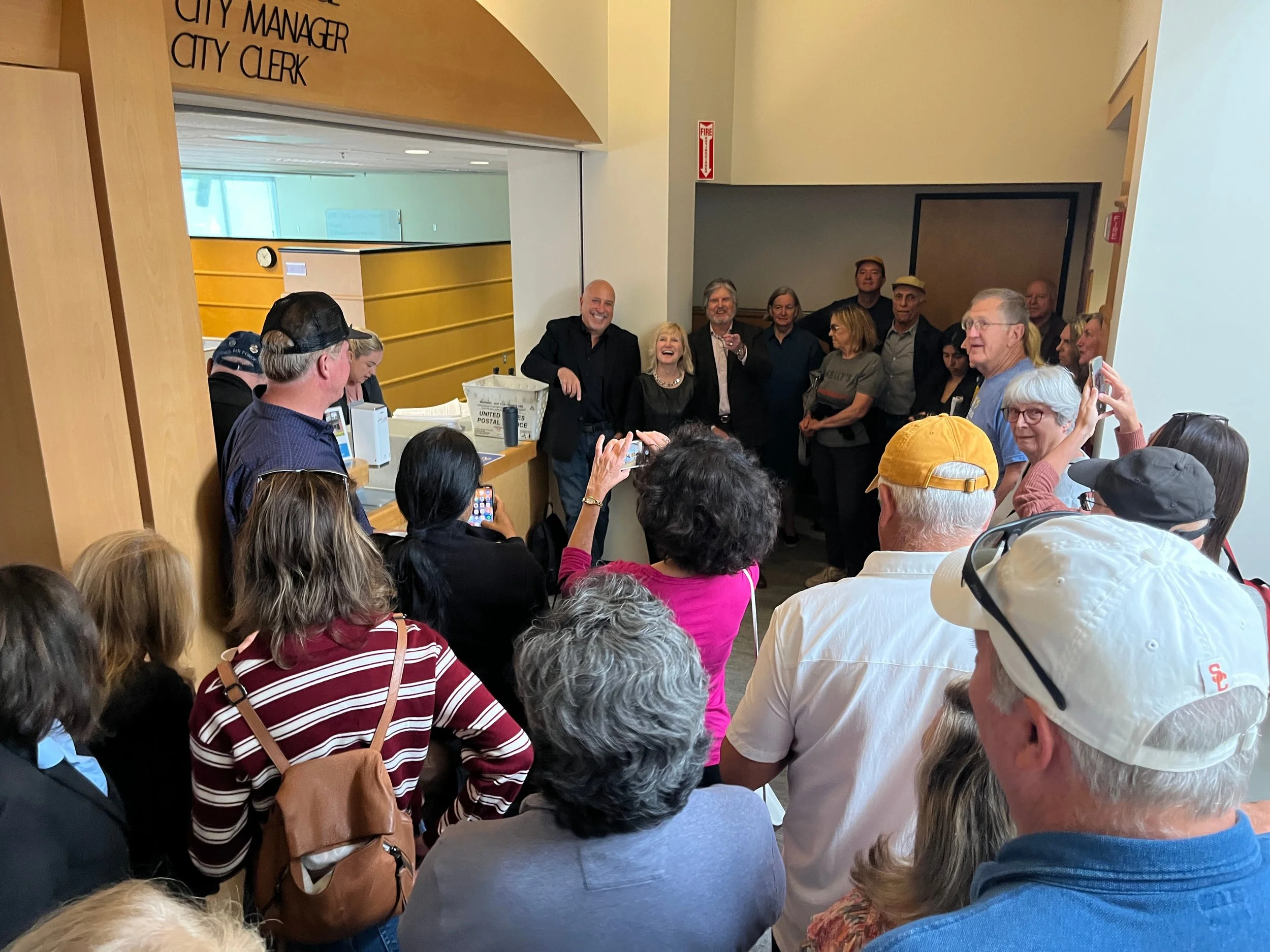




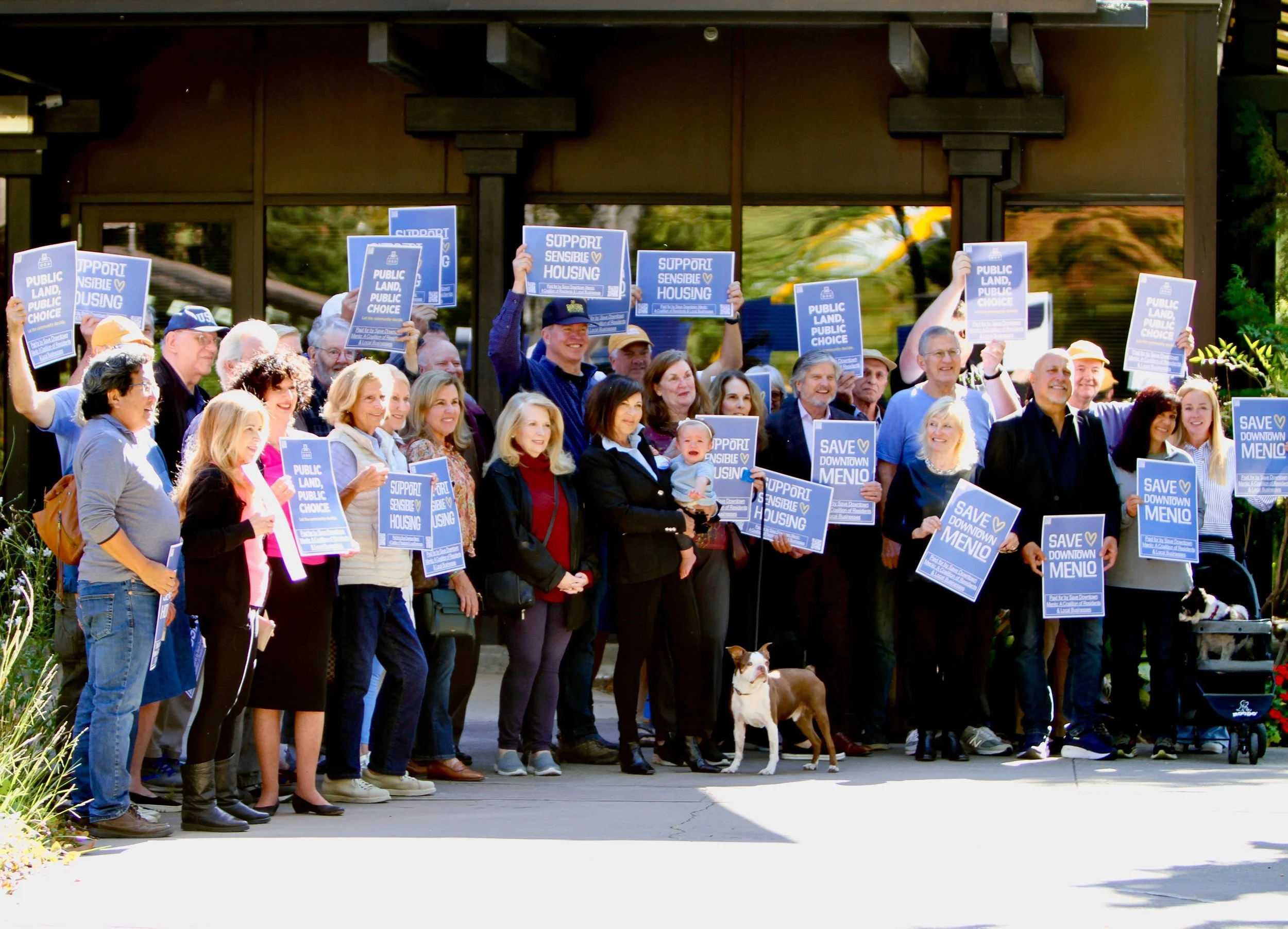


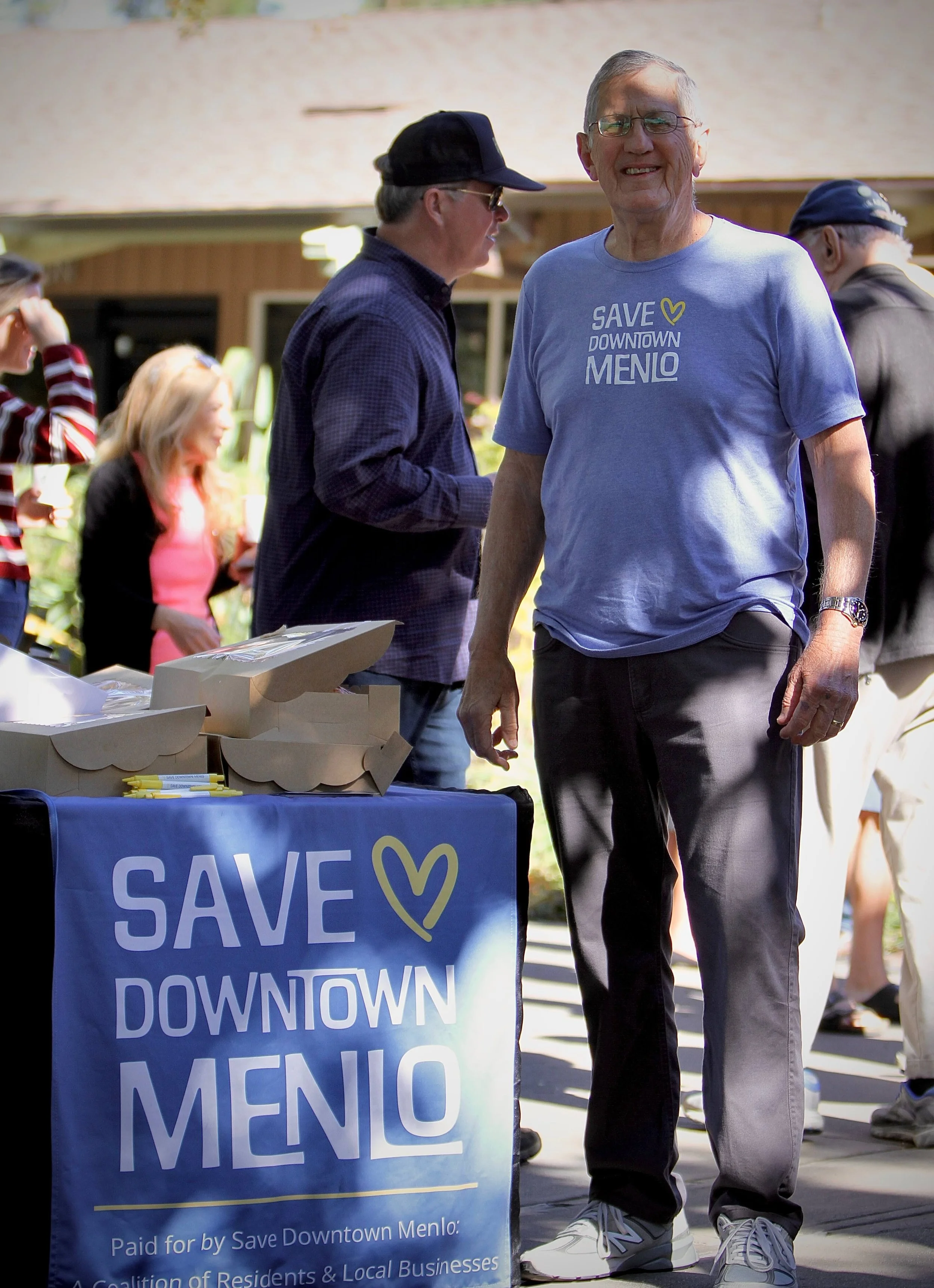
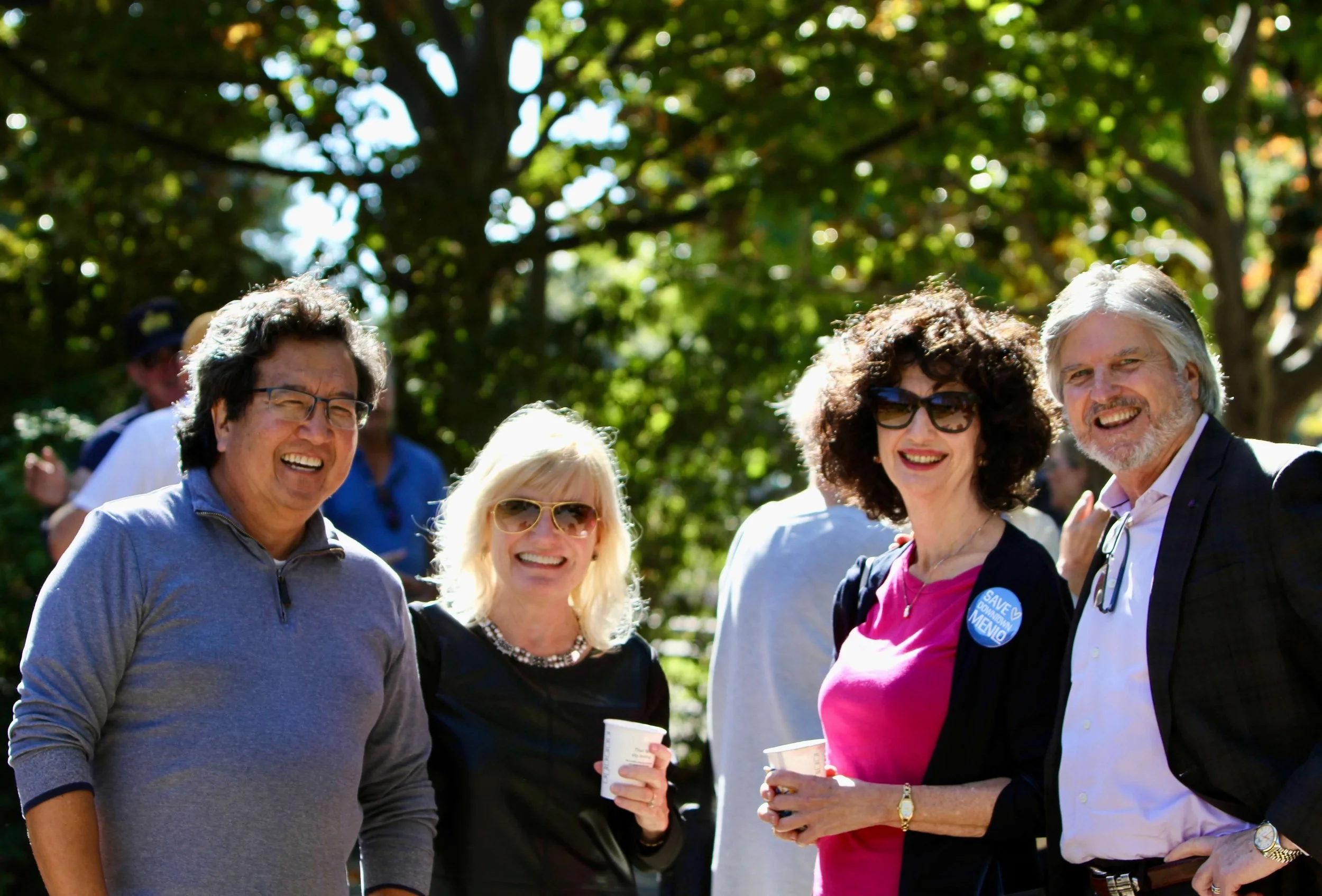

WHAT JUST HAPPENED:
At the November 4th meeting, Council could have adopted the ordinance outright or put it on a future ballot. (See an email from 400 residents requesting adoption.) Instead, Council commissioned a $165,000 study by M-Group - the same consulting firm that managed the process that originally led do the downtown parking lots being part of the housing plan in the first place. By requesting the study, Council pushed back their decision till the December 2nd meeting.
IMPORTANT:
We’ve created a page showing Alternative Sites for housing which don’t sacrifice our downtown. At the Aug. 26 Council meeting, Principal Planner Tom Smith went over each of these alternatives, but gave no reasons why they were not viable alternatives.
RECENT PRESS:
Nov. 10, Palo Alto Daily Post: Letter to the Editor by a resident.
Nov. 5, The Almanac: ‘Kicking the can down the road’: Menlo Park orders $165K study on parking lot initiative
Oct. 13, The Almanac: Blog: Downtown Menlo Park Affordable Housing Plan Faces New Challenges
Our Citizens’ Initiative
Our downtown businesses survive because they serve the 370,000 people who live within a 20-minute drive. But if the parking lots are used for large-scale housing developments, our downtown will become too difficult to access—and it will no longer be viable as a business district. Read this plea from 115 downtown businesses.
There are better sites for housing. And yet, our City leaders continue to push this plan forward—despite overwhelming opposition from thousands of residents, neighbors, and local businesses.
That’s why we’ve launched a Citizens’ Initiative. If passed, it would require any repurposing of the downtown parking lots to first be approved by Menlo Park voters.
Misconception #1 -
There is no time
In order to meet our state’s housing allocation, we just need to have the entitlements and permits in place by 2031. The actual construction can come later. That means there's still time to pivot to better sites—ones that don’t jeopardize our downtown.
The idea that it’s too late to change course is not true. When Councilmember Jeff Schmidt asked what would happen if the City discontinued the plan to put housing on the Downtown parking lots, the City Attorney responded that we’d “continue on the path of pursuing other housing development projects.” Watch the exchange below. It’s enlightening.
And even if we were running out of time, it would be all the more reason to change course. The use of the parking lots are fraught with environmental, legal, and economic problems which could cause the project to be an expensive dead-end, regardless of what City Council wants.
Misconception #2 -
There are no alternatives
The City Council (except Mayor Combs) would have us believe that there were no other viable options for affordable housing. But there were, and there are. We have choices. Housing Elements can be amended. (What’s a Housing Element? Learn more here.)
We’ve put together a presentation of several alternative sites which would provide better options for housing, without sacrificing the vitality of our downtown. Click here to learn more about these alternatives.
Mayor Combs Explains
Mayor Drew Combs is our only representative who has supported considering alternatives. Watch this 2.5 minutes of him speaking, and you’ll learn everything you need to know about the situation we’re in.
He begins by expressing concern about “the extreme concentration of affordable housing in one location” and “strangling downtown.” He then candidly admits that the parking lot plan was not a last resort—it was simply “what the Council at the time thought was the vision of Menlo Park in the future.”
But was it your vision for Menlo Park? Mayor Combs is the only City leader who seems to care about the answer.
Drone footage of parking lots 1, 2, and 3, going from El Camino to University Drive, captured on June 5, 2025 (2x speed)
What has happened?
1. In December 2023, Menlo Park’s Housing Element was adopted. The 1,400 page document included a few pages designating the downtown parking lots as potential sites to meet the state-mandated housing allocation (RHNA). Very few residents were aware of this designation.
2. In August 2024, City staff, led by Principal Planner Tom Smith, recommended that the City prioritize the redevelopment of Parking Plazas 1, 2, & 3 for affordable housing. In this plan, the three lots north of Santa Cruz Avenue (comprising 556 spaces) would be used for a minimum of 345 units for low income residents.
Typical restrictions relating to density, height, and parking would be waived because it’s affordable housing near the train station. Buildings as tall as 10 stories, with no residential parking spaces legally required.
No studies had been conducted to assess the potential impact on traffic, congestion, and infrastructure.
No good suggestions were made for replacement parking. A multi-level parking structure was mentioned, but with no plans for funding, location, or timeline. Parking lots are already near capacity, and many people who shop in downtown Menlo do so specifically because they don’t have to deal with parking garages.
Little thought was given to the congestion, decrease in parking accessibility, and years of construction that could devastate our businesses and the jobs they provide.
Alternative locations for affordable housing were not adequately considered, with city officials believing that housing in the parking lots would be good for “the vibrancy of downtown.”
3. On Nov. 19th, City Council planned to vote on declaring the parking lots as “exempt surplus land” (a required legal step to begin development). However, the overwhelming turnout of residents, businesses, and downtown property owners opposing the plan led Council to postpone the vote till Jan. 14th and direct staff to conduct more public outreach.
4. On Jan. 13th, a statement of opposition by 112 businesses located adjacent to the parking plazas was submitted to Council.
5. Competing petitions were done. Menlo Together, an advocacy group which has been working on this issue for many years, did a petition in favor of the plan. (345 signatures on Jan. 14). Save Downtown Menlo, a loose collection of residents and business owners which coalesced after the Nov. 19th meeting, did a petition against the plan. (2,900 signatures on Jan. 14.)
6. At the Jan. 14 Council meeting, Council Chambers were overflowing with people, with many left standing out in the cold. The vast majority of the audience opposed the housing plan. Nonetheless, Council voted to continue the process by issuing an RFQ (Request for Qualifications) to solicit credentials and designs from prospective developers. Council stopped short of declaring the parking lots as “exempt surplus land”, a step which would need to be done before selecting a developer. Council stressed that issuing the RFQ does not commit them to development, but is needed in order to have something specific to decide upon.
7. At the Jan. 28 Council meeting, public comment was filled with speakers reiterating the desire for alternative sites to be considered. Mayor Combs suggested that the RFQ for the downtown be paused, but other councilmembers disagreed, saying that the RFQ is important for information gathering and should not be delayed. However, Council did approve a motion by Councilmember Schmidt for a staff report explaining why the downtown parking lots were our Housing Element’s only City-owned opportunity sites.
8. A special March 4, City Council meeting was held to go over the staff report reviewing the previous evaluations of City-owned sites for housing. According to the report, the Civic Center was eliminated from consideration due to “active civic facilities” and a desire to protect city parkland (even though the Civic Center parking lots are neither civic facilities nor parkland). Once again, residents expressed strong opposition to the use of the downtown parking lots and asked for other sites to be explored. Mayor Combs wanted to ask staff to further explore the feasibility of City-owned sites, but he received no support from the other councilmembers, who wanted to wait to see what the developers submit in response to the RFQ.
9. On March 22, the results of the annual City Priorities Survey were released by the City Manager’s Office. When asked “Do you have additional input on priorities for Menlo Park?” 126 of the 544 respondents (23%) expressed opposition to the use the downtown parking lots for housing. (while 13 responses, or 2%, expressed support for it.) You can read all the responses starting on page 12 of this staff report or see a summary on pages 14-25 of this presentation.
10. On April 2, the City announced that it received seven submittals from development teams in response to the RFQ. They are here.
11. On April 14th, the attorneys for Save Downtown Menlo filed a lawsuit in the San Mateo County Superior Court.
12. On May 15th, residents filed a Notice of Intent to Circulate a Petition for our Citizens’ Initiative - a ballot measure that would require a public vote before repurposing the parking plazas.
13. On June 3rd, Council decided to have staff draft an RFP (Request for Proposal) from developers - despite the fact 94% of the 141 public comments indicated opposition to plan, as shown in the staff report.
14. On June 3rd, Save Downtown Menlo began collecting signatures for our Citizens’ Initiative. To qualify for the ballot, we must collect signatures from at least 10% of Menlo Park’s registered voters by this November.
15. On August 4th, Save Downtown Menlo announced that it has collected a sufficient number of signatures, but would keep collecting them to show depth of public support.
16. On August 23rd, Save Downtown Menlo released its Alternative Sites page, identifying some viable alternatives to the downtown parking lots.
17. On August 26, the City Council approved the RFP, but not before downgrading the requirement to replace the parking spaces to be simply a “priority.”
18. On Sept. 15, the City of Menlo Park issued a Request for Proposals (RFP) to seek development of housing on downtown Parking Plazas 1, 2 and 3. The submission deadline is Dec. 15, 2025.
19. On Sept. 29, Save Downtown Menlo pauses its lawsuit, until and unless the City takes a final action.
20. On Oct. 10, residents submitted the petition signatures for their Downtown Parking Plazas Initiative. The County counted a total of 3,928 signatures, and then began a process of examining them. They examined 2,760 random signatures, at which point they stopped examining because from that they were able to reach 2,200 valid signatures (5% over the minimum threshold of 2,104) - which is what the County considers a comfortable margin. Their examination of the 2,760 random samples resulted in a validity rate of 80%. At that rate, had they examined all 3,928 signatures, there would have been about 3,130 valid signatures — roughly 50% more than the required minimum, or 15% of Menlo Park’s voting population.
21. 400 emails were sent by Menlo residents to City Council in the days prior to their Nov. 4 City Council meeting, asking Council to adopt the Downtown Parking Plazas Ordinance that was proposed in our Citizens Initiative.
22. On Nov. 4, Council Council delayed their decision on whether to adopt the ordinance or put it on a future ballot. Instead, Council commissioned a $165,000 study by M-Group - the same consulting firm that managed the process that originally led do the downtown parking lots being part of the housing plan in the first place. By requesting the study, Council pushed back their decision till the December 2nd meeting.
What’s next?
At their Dec. 2nd meeting, Council will review the commissioned report and decide whether to adopt the Downtown Parking Plazas or put it onto a ballot - either the next regular election in November, 2026 or an earlier special election.
Subscribe for email updates to stay informed as things happen.
What you can do:
1 - Learn More
Here’s the City’s information about the plans: menlopark.gov/downtowndevelopment
2 - Contact City Council
You can send a public email to Council at city.council@menlopark.gov
Or contact your councilmember directly or attend their office hours. Here’s how to reach them.
3 - Sign our Change.org Petition
Join over 4,000 others signers who do not think the downtown parking lots should be declared surplus land: Change.org petition.
5 - Spread the word
Tell friends and neighbors. Share this page on social media with the buttons below:
6 - Subscribe for email updates!
To be involved, you need to know what’s going on.
AND LEARN MORE ABOUT OUR CITIZENS’ INITIATIVE
What is Menlo Park’s Housing Element?
The Housing Element is a state-mandated section of the City’s General Plan that identifies how the city will accommodate its regional housing needs allocation (RHNA) of nearly 3,000 units at different levels of affordability. The 2023–2031 Housing Element was certified by the California Department of Housing and Community Development (HCD) in March 2024. If the Housing Element is not compliant, the state may withhold funding and resources from the city.
The housing element period (2023–2031) doesn’t require that all units be built by December 31, 2031. Rather, Menlo Park must demonstrate by that time that:
Adequate zoning capacity and planning policies are in place to meet its Regional Housing Needs Allocation (RHNA) across income levels.
It has activated that capacity—meaning sites have the proper zoning, approvals, and policies so housing can be built.
How did the City originally fund the parking lots?
Between 1945 and 1965, the City used assessments on surrounding properties to fund the acquisition of land to create parking lots for the adjacent businesses. The City attorney now claims these lots can be re-purposed because the properties have “received the long-term benefit of the financed improvements” - but ethical and legal objections have been raised in response to that opinion.
What might the apartment buildings look like?
Conceptual designs were initially provided by UC Berkeley students as part of a class project. Perhaps the final developments will resemble those concepts. Or perhaps they will be more like the recently completed Kiku Crossing in San Mateo, which has a mere 245 units (compared to the 345-483 units planned for downtown Menlo.)
Would there be replacement parking?
Not nearly enough. “Replacement parking” would either be pushed into a large parking garage or require a validation system. Worse, the plans for resident parking provide only about half a parking space per unit—meaning hundreds of new residents would end up competing with customers for the limited public parking.
Would foot traffic from new housing help downtown businesses?
Local businesses would welcome more nearby residents—but not if it blocks access for everyone else. According to the 2022 Menlo Park Downtown Market Study, our downtown's “trade area” includes about 370,000 people within a 20-minute drive. If parking becomes just 5 minutes harder, that trade area shrinks by about 150,000 people. And seniors, families with kids, and people with mobility issues will reluctantly go elsewhere. Our businesses can't survive that loss.
Are you NIMBYs?
No.Residents from across Menlo Park and neighboring cities are stepping up to protect a vital, public-serving downtown. The opposition is unprecedented and widespread. Safeguarding a vital, shared resource is not the same as saying “not in my backyard.” NIMBYism has certainly posed challenges in California. But that doesn’t mean every parcel of land is fair game. Some places just don’t make sense.
Where else could the housing go?
There are better alternatives nearby—underused city-owned parcels and large private development sites—where housing can be added without sacrificing access to downtown or harming small businesses. Our City leaders chose the parking lots because they wanted to, not because they had to.
Can a state-approved Housing Element be amended?
Yes. Cities often amend their Housing Elements. For example, the City of San Mateo is currently revising its plan to shift housing away from business-serving parking lots and onto more suitable sites.
Would amending our Housing Element risk decertification?
We believe the opposite is true. To maintain certification, the City must focus on viable sites. Trying to force massive apartment buildings into narrow, heavily used downtown parking lots—without studying traffic, fire safety, or infrastructure—puts the entire plan at risk. These lots are plainly ill-suited for dense housing, and the challenges may be insurmountable. We’re still early in the Housing Element cycle. We have time to pivot to a workable plan. What we don’t have is time to cling to one that clearly won’t work.
Who is on the Menlo Park City Council?
Mayor Drew Combs, Vice Mayor Betsy Nash, and Council Members Cecilia Taylor, Jeff Schmidt, and Jennifer Wise. Here’s how to reach them.
Some questions & answers
By the public:
480+ Emails to City Council in opposition to the plan.
Two pamphlets offering deep commentary on the issue.
An analysis of better options for our Housing Element.
By the press:
Aug. 28, The Almanac: Menlo Park plans to construct low-income housing on city-owned parking lots downtown
Nov. 15, The Almanac: Menlo Park council to vote on converting downtown parking into affordable housing
Nov. 19, Palo Alto Daily Post: Opponents of housing plan ask city to hit the brakes
Nov. 21, Palo Alto Daily Post: Council gets an earful from residents and puts off a decision on public housing above Santa Cruz Ave. parking lots
Dec. 11, The Almanac: Menlo Park residents, business owners organize opposition to city’s plan to build housing on downtown parking lots
Dec. 13, Palo Alto Daily Post: City hears from opponents at meeting on plans to put public housing on downtown parking lots
Jan. 10, The Almanac: Menlo Park threatened with competing lawsuits over downtown parking plan
Jan. 11, The Almanac: Will The Menlo Park Downtown Affordable Housing Project Become A Train Wreck?
Jan. 13, Palo Alto Daily Post: Council votes tomorrow on putting housing downtown
Jan. 14, Palo Alto Daily Post: Opinion: Council should reject downtown housing plan
Jan. 15, Palo Alto Daily Post: Menlo Park moves forward with plan to put housing on parking lots
Jan. 15, The Almanac: Menlo Park council gives go-ahead to seek developer input on downtown parking lots
Jan. 23, The Daily Journal: Sacramento’s attack on our suburbs
Jan. 30, The Almanac: Menlo Park Dismisses A Promising Alternative To Downtown Affordable Housing
Feb. 3, The Almanac: Menlo Park could revisit Civic Center, parks for housing amid opposition to using downtown parking lots
Mar. 1, The Almanac: Can Menlo Park Afford The Downtown Affordable Housing Project?
Mar. 3, Palo Alto Daily Post: Feds slash price of USGS campus
Mar. 7, The Almanac: Progress report shows Menlo Park is on track with housing construction
Mar. 24, Palo Alto Daily Post: City Council adds downtown to its priority list
Mar. 26, The Almanac: Menlo Park businesses raise $130,000 to fight downtown development
Mar. 31, The Real Deal: Resi redevelopment of parking lots stirs controversy in heart of Silicon Valley
April 6, Palo Alto Daily Post: Seven developers say they want to build public housing downtown
April 8, The Almanac: Developers pitch visions for downtown affordable housing
April 22, Palo Alto Daily Post: Lawsuit says city can’t use downtown parking lots for housing without a vote of property owners
May 13, InMenlo: Menlo Park residents to file Downtown Parking Initiative on May 15
May 14, Palo Alto Daily Post: Save Downtown Menlo takes first step in putting city’s plan to eliminate parking on the ballot
May 15, The Almanac: What’s next for residents’ effort to protect Menlo Park’s downtown parking lots
May 18, The Almanac: New Directions For Planning Menlo Park Affordable Housing
May 19, The Mercury News: Group seeks to halt Menlo Park parking lot redevelopment with ballot measure
June 4, The Almanac: Supporters and opponents weigh in on Menlo Park parking lot ballot measure
June 5, KPIX | CBS NEWS BAY AREA: Menlo Park residents debates city's push to build housing units in 3 parking lots
June 9, Palo Alto Daily Post: City may rehire PR firm as possible referendum on downtown public housing looms
June 21, San Mateo Daily Journal: Settlement reached between San Mateo, housing nonprofit
June 24, The Almanac: Menlo Park housing proposal advances as opponents seek to block it
July 16, The Almanac: Police tell Menlo Park business to remove Save Downtown Menlo sign
July 20, The Almanac: Sign the Petition For The Downtown Parking Plaza Initiative Today
Sept. 10, The Almanac: Developers invited to submit proposals for downtown affordable housing sites
Sept. 24, The Real Deal: Menlo Park’s parking-over-housing plan appalls local businesses
Oct. 10, The Almanac: Menlo Park residents submit signatures for downtown parking lot measure
Oct. 13, The Almanac: Blog: Downtown Menlo Park Affordable Housing Plan Faces New Challenges
Oct. 16, The Mercury News: Opponents of Menlo Park affordable housing proposal reach signature threshold for ballot measure (or see this free version)
Nov. 5, The Almanac: ‘Kicking the can down the road’: Menlo Park orders $165K study on parking lot initiative
What’s being said?
Traffic is Already Bad
Most afternoons & evenings, traffic on Oak Grove Ave. backs up for blocks. Now imagine if this parking lot, and the two on each side of it, consisted of high-rise housing and parking structures.

